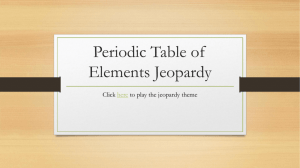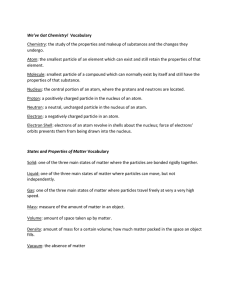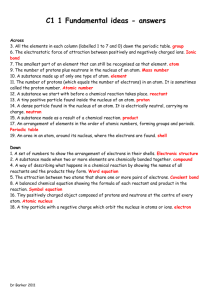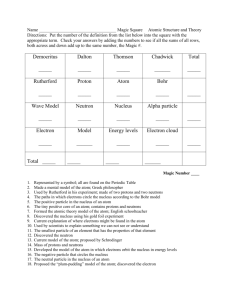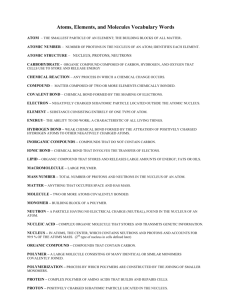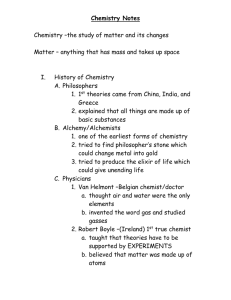Atoms – The smallest unit of an element that retains the properties of
advertisement
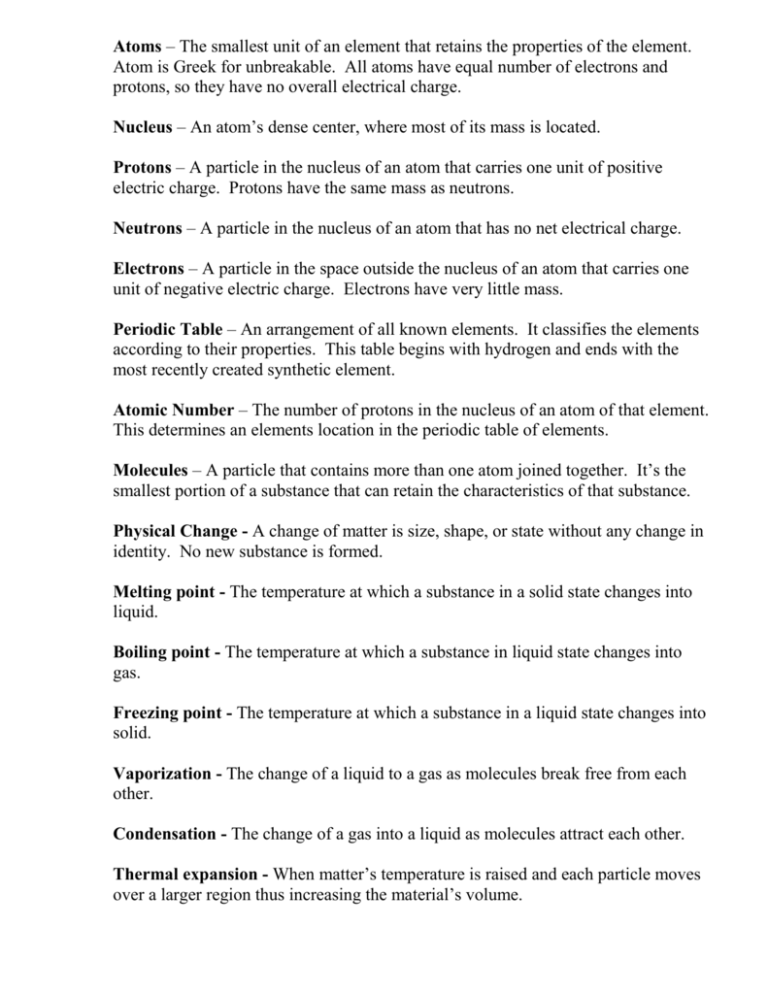
Atoms – The smallest unit of an element that retains the properties of the element. Atom is Greek for unbreakable. All atoms have equal number of electrons and protons, so they have no overall electrical charge. Nucleus – An atom’s dense center, where most of its mass is located. Protons – A particle in the nucleus of an atom that carries one unit of positive electric charge. Protons have the same mass as neutrons. Neutrons – A particle in the nucleus of an atom that has no net electrical charge. Electrons – A particle in the space outside the nucleus of an atom that carries one unit of negative electric charge. Electrons have very little mass. Periodic Table – An arrangement of all known elements. It classifies the elements according to their properties. This table begins with hydrogen and ends with the most recently created synthetic element. Atomic Number – The number of protons in the nucleus of an atom of that element. This determines an elements location in the periodic table of elements. Molecules – A particle that contains more than one atom joined together. It’s the smallest portion of a substance that can retain the characteristics of that substance. Physical Change - A change of matter is size, shape, or state without any change in identity. No new substance is formed. Melting point - The temperature at which a substance in a solid state changes into liquid. Boiling point - The temperature at which a substance in liquid state changes into gas. Freezing point - The temperature at which a substance in a liquid state changes into solid. Vaporization - The change of a liquid to a gas as molecules break free from each other. Condensation - The change of a gas into a liquid as molecules attract each other. Thermal expansion - When matter’s temperature is raised and each particle moves over a larger region thus increasing the material’s volume.

